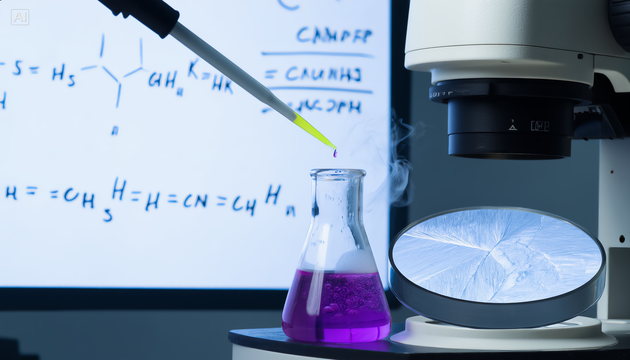Editor's Note:
In the Dialogue with Scientists series, National Business Daily (NBD) examines how the frontiers of discovery are shifting in the wake of the 2025 Nobel Prizes. From molecular design to life’s origins, the conversations with the pioneering minds reveal how modern science advances—not by certainty, but by curiosity and doubt.
When Professor John F. Hartwig looks to the future of chemistry, he sees a field on the verge of a profound transformation. Alongside Stephen L. Buchwald, Hartwig is credited with the development of the Buchwald–Hartwig amination, a palladium-catalyzed reaction that forms carbon-nitrogen bonds by coupling amines with aryl halides.
In an exclusive interview with National Business Daily (NBD), Prof. Hartwig whose work has already revolutionized drug discovery pinpointed three powerful trends that will define the coming decades: the integration of artificial intelligence, the rise of hybrid catalysts combining synthetic and biological systems, and the ability to design entirely new enzymes.
Hartwig predicted that 20 years from now, the way we plan and conduct synthetic chemistry will be fundamentally different. "The combination of AI and synthetic chemistry, the widespread use of biocatalysis with synthetic catalysts, and massive increases in computational abilities will revolutionize our ability to design reactions—and even create new ones."

John F. Hartwig (Photo/UC Berkley Research)
The Reaction That Changed Modern Chemistry
NBD: Your development of the Buchwald–Hartwig amination has enabled the efficient formation of carbon-nitrogen bonds, a critical step in creating many pharmaceuticals, agrochemicals, and materials. Why was this such a breakthrough?
Hartwig: The most common atoms in living systems are carbon, hydrogen, oxygen and nitrogen. A carbon-nitrogen bond is the chemical connection between a carbon atom and a nitrogen atom formed by the two atoms sharing electrons.
Our reactions gave chemists a new way to connect nitrogen atoms to carbon atoms and, as a result, to make the synthesis of many types of organic molecules faster. Instead of making common classes of molecules containing nitrogen (called amines) from a series of reactions, they could make these molecules by just one reaction.
The analogy is not perfect, but it’s a little like giving a carpenter a power hammer to build a house instead of the a classical hammer or giving the carpenter a circular saw instead of a hand saw.
NBD: How did you and Dr. Buchwald achieve this?
Hartwig: We did so by creating a catalyst from the precious element palladium with molecules attached to the palladium that would cause this metal to break specific bonds at low temperatures and to make a carbon-nitrogen bond.
There was precedent from a decade earlier, like there often is in science, but we both recognized that the reaction could be conducted in a much better way with better catalysts to enable the reaction to occur with the carbon and nitrogen atoms in many different chemical structures to make useful products. That said, neither of us thought it possible that the reaction would work as well and as generally as it does now.
Getting to the current capabilities required many improvements and many studies to learn how the reaction occurs. You can't build a better mousetrap if you don't know how a mousetrap works.
From Lab to Life—Drugs That Help Millions

Photo generated by AI
NBD: How does it feel to see your reaction used worldwide, including in life-saving drugs?
Hartwig: It is simply thrilling. It was a dream many years ago as a Ph.D. student and assistant professor to discover and develop a reaction or catalyst that would be widely used. As I said above, I didn't imagine this one forming carbon-nitrogen bonds could work so well and so generally. To see this reaction used to make tons (literally) of products that are used to treat cancer, HIV, hepatitis C, depression, multiple sclerosis and other diseases is immensely satisfying.
NBD: Can you give an example of a drug that is now made more efficiently because of your research, and what does this mean for patients?
Hartwig: Yes, I know of several molecules that are in medications approved by the FDA or are in late stages of the final phase III clinical trials.
Two of those, Dasabuvir and Pibrentasvir were developed by Abbvie to be used alone or in combinations with other molecules to treat hepatitis C. These drugs are essentially a cure for that disease.
A third, from Abbvie and Genentech, is Venetoclax used to treat types of leukemia. A fourth, Deucravacitinib from BMS, was just approved to treat psoriasis. Before this compound, there was no effective treatment for this skin condition, and this molecule was named "molecule of the year" in Drug Hunter.
Tackling Plastic Waste with Molecular Tools
NBD: Your lab recently developed a process to break down polyethylene and polypropylene—two of the most common plastics. How does it work?
Hartwig: We used two catalysts in the most recent system. Polyethylene and polypropylene are chains of carbon atoms connected by strong and unreactive carbon-carbon bonds. We first create the "Achille's heel" by cleaving surrounding carbon-hydrogen bonds to enable reaction at a modified carbon-carbon bond where these hydrogens were attached.
Then, we cleave the chain at this carbon-carbon bond, move that reactive bond into the chain, cleave again, and repeat a couple of thousand times until the chain is fully disassembled. It is a bit like taking apart a string of pearls by changing the knots between the pearls so they are more readily untied and then pulling the pearls off one by one or groups at a time.
Next Frontiers: AI, Enzymes, and the Future of Chemistry

Photo generated by AI
NBD: How is AI influencing your research?
Hartwig: About machine learning (ML), I am confident it will become a valuable tool, but the question for research is whether it can enhance or mimic human creativity.
A simple chemical synthesis can be planned and robotics could execute some of the manual tasks and conduct some of the experiments. But if robots are just starting to be able to make clothing, why will they be able to make molecules? Laboratory techniques are difficult to execute and they are highly varied.
Thus, I see one future when robotics execute simple tasks and ML addresses problems that do not require creativity, and that researchers, together with AI, can be more creative than either alone and can execute laboratory techniques more efficiently than either alone.
I also think there are revolutions driven by AI that many of us don't know are possible.
Just one example is how computational chemistry is quickly being revolutionized by aspects of quantum mechanics that can be approximated by ML. Using ML in this way to predict chemistry could displace the methods that are being used currently to compute the properties and reactivity of molecules that are too slow to be used for predictive purposes.
Thus, our views on a future of chemistry and AI are changing rapidly and mine continuously oscillate from high expectations to skepticism and back.
NBD: Could AI help us design a new class of catalysts using more abundant and less expensive metals, like iron or nickel, as alternatives to palladium?
Hartwig: This goal is a target of many groups, but the amount of available data on reactions catalyzed by Fe and Ni for training an ML tool is less than that for the precious metals, and we can’t even use ML to design a new catalyst with precious metals.
As I said above, the research problems for which the most creativity is needed and the smallest sets of data are available is the greatest challenge for AI. Thus, AI could help this proposed task in the long term, but I suspect the early examples will be “proof of concept” cases, rather than true predictions and designs with AI.
NBD: What do you believe is the single most important trend that will define the future of synthetic chemistry in the next 10 to 20 years?
Hartwig: Can I give you three? The combination of AI and synthetic chemistry will likely change how synthetic chemistry is planned and conducted 20 years from now.
I also think that biocatalysis will be used widely, in combination with synthetic catalysts, 20 years from now.
Finally, massive increases in computational abilities with AI could revolutionize our ability to design a synthetic sequence of reactions, design catalysts, and maybe even design completely new reactions. Using AI to design new enzymes to catalyze reactions for synthetic chemistry – a goal that combines all three proposed trends – is likely on the near horizon.


 川公网安备 51019002001991号
川公网安备 51019002001991号





